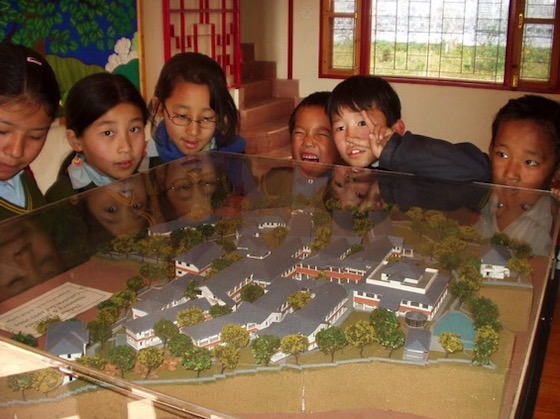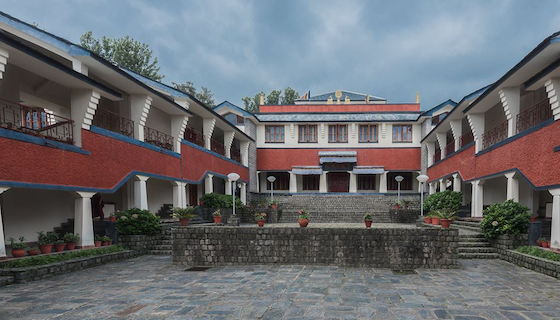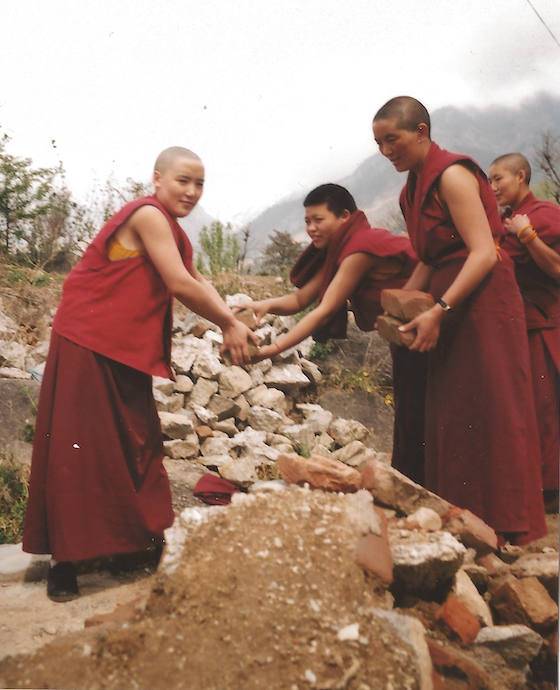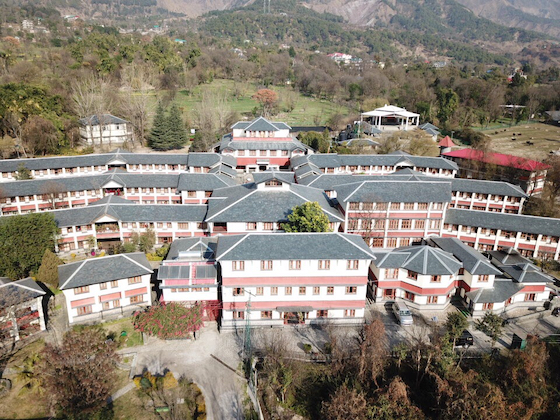We are very saddened by the passing of Munishwar Nath Ashish Ganju. He was the architect of Dolma Ling Nunnery and Institute and long-time friend of the Tibetan Nuns Project.
MN Ashish Ganju passed away on May 5, 2021 due to COVID-19. He was 78. He is survived by his wife, Neelima, and daughters Tara, Surya and Chandini. One obituary said, “True to his love for nature, his daughters’ names translate as Star, Sun, and Moonlight respectively.” The nuns and everyone at the Tibetan Nuns Project send our deepest condolences to his family, friends, and colleagues.

Munishwar Nath Ashish Ganju, a long-time friend of the Tibetan Nuns Project and the architect of Dolma Ling Nunnery and Institute passed away from COVID-19 on May 9, 2021.
About Munishwar Nath Ashish Ganju
Munishwar Nath Ashish Ganju trained at the Architectural Association School of Architecture in London and qualified in 1966. He returned to India in 1967 where he later taught at the School of Planning and Architecture and at the Indian Institute of Technology in New Delhi. MN Ashish Ganju was also a visiting professor at the UK’s University of East London and Italy’s Universita IUAV di Venezia.
He was highly respected and won many national and international design competitions. He was the founding Director of the TVB School of Habitat Studies in New Delhi and was a member of several Government of India committees.
Remembering MN Ashish Ganju, The Indian Express wrote, “For him, architecture was a deeply spiritual pursuit, where he combined his knowledge of Kashmiri Shaivism and Tibetan Buddhism.”

Tibetan children looking at the architectural model for Dolma Ling Nunnery and Institute. Photo from the Tibetan Nuns Project archives.
“One never saw him as trying to be a legend or an architect, he just went about doing what he believed in,” said architect Henri Fanthome. “He had a refreshing spirit and an undying ability to go after what he believed in.”
“He brought an innovative perspective to design combining Eastern philosophy, local materials with a Western rigour,” said Sumita Singha, Director of Ecologic Architects. “In time, his body of elegant and masterful works included his own home, community centres, a Buddhist memorial and nunnery for the Dalai Lama and urban design projects.”
MN Ashish Ganju described his work as follows: “My architectural practice provided the ground for the exploration of architecture as a manifestation of ancient sacred principles, so much a part of our everyday existence. The practice made no distinction between architecture, interior, landscape, or urban design. The message from our cultural roots was very clear; our existence on Mother Earth was an interdependent process with all five elements of earth, water, fire, wind, and space manifest in the dynamic equilibrium of human activity and the physical environment, as found and as built.”

Dolma Ling Nunnery and Institute in the monsoon. The region experiences heavy monsoon rains and is the second rainiest place in India. The design has a series of courtyards and terraced gardens drained by a network of water channels. Photo courtesy of Norman Steinberg
Architect for Tibetan Projects
MN Ashish Ganju did many projects for Tibetan refugees. “I was asked by Tibet House (the cultural office of HH the Dalai Lama) to design a memorial in Buddha Jayanti Park in New Delhi. The memorial was to house a two and a half metre tall statue of Buddha which was presented by the Dalai Lama to the people of India as a symbol of gratitude by the Tibetan people who were given refuge in India… The iconography of the canopy was worked out in close consultation with Tibetan Lamas and scholars, while the tectonics were decided with the stone masons who belonged to a tribe practising this vocation since time immemorial by building temples in Central India as well as Rajasthan and the North Indian plains.”

Tibetan Buddhist nuns helping to build Dolma Ling Nunnery. Architect MN Ashish Ganju said the design was “in keeping with Buddhist principles of harmonious interdependence of all living beings and objects.”
“This assignment led to my being asked to design a monastery for Tibetan refugee nuns in Dharamsala in the Kangra Valley. The project, sponsored by the Tibetan Nuns Project, was executed as an exercise in self-build by the user community. The design was worked out in close consultation with the users, and in keeping with Buddhist principles of harmonious interdependence of all living beings and objects. The construction, including materials and labour, was managed by the user community.”
Dolma Ling: Living with Nature
Here’s how MN Ashish Ganju described the Dolma Ling project:
The Tibetan Nuns Project has undertaken an extensive program to resettle many of the nuns fleeing their homeland in Tibet to escape persecution by the Chinese government.
The site for this Nunnery is piece of agricultural land, measuring about 6 acres, situated in the valley below Dharamsala where the Dalai Lama now lives. The requirement was to house 250 nuns along with teachers and support staff. The plan provides for 125 rooms and 12 classrooms, an assembly building containing a hall for religious assembly, a library, a large lecture room and a residential suite for the Dalai Lama; as well as common dining hall with kitchen, a workshop for craft activities, a health centre, an office, a guest house, and staff residences.
The site slopes to the south and was terraced for farming. This region experiences extremely heavy rainfall during the monsoon making it the second rainiest place in India. The design makes use of system of verandahs which distribute the built spaces around a series of courtyards and terraced gardens which are drained by a network of water channels lined with locally quarried stone.

An aerial view of Dolma Ling Nunnery and Institute taken in 2018. MN Ashish Ganju was the architect for this large campus.
The common facilities are placed on a central axis across the contours with the office at the bottom near the entrance, the dining hall in the center, and the assembly building at the top. The nuns’ rooms are placed along the contours overlooking south-side terraced gardens and connected by north-side verandahs to the common facilities and the central courtyards. These courtyards are flanked by the main verandahs to form a ceremonial route rising up the slope and culminating in the assembly building.
A water reservoir on the north-east corner of the site and a water channel running along the northern boundary act as a moat to protect the buildings from the flash floods which inundate the fields above during the monsoon. The construction is being done by local masons and carpenters supervised by volunteers of the Tibetan Nuns Project. The construction techniques are chosen to be easily managed by a somewhat inexpert building team. The main building materials are locally quarried stone and slate tiles, as well as local bricks.
